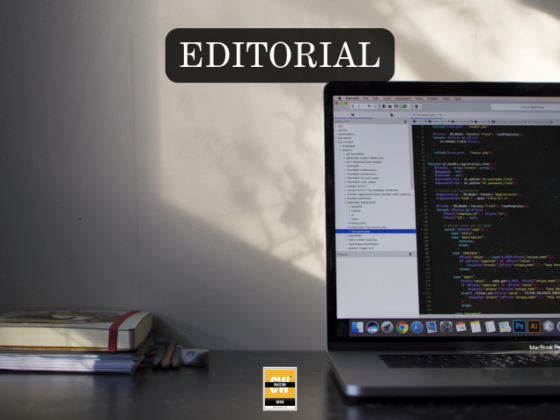On the blistering roads of Jacobabad, where temperatures can climb above 50 degrees Celsius, the heat seems relentless and unyielding. Yet even in these punishing conditions, something quieter is beginning to stir. Motorbikes that once rattled with the roar of two-stroke engines are being replaced with machines that hum silently. In Karachi’s Saddar, delivery riders navigate on black scooters that glide past buses with hardly a sound. In Lahore, electric rickshaws move through clogged intersections, leaving no trace of exhaust fumes behind. To the casual observer, these may appear to be small and isolated shifts, but together they signal the opening chapters of a much larger story—the electrification of Pakistan’s roads.
For now, the scale remains modest. Electric vehicles, or EVs, make up less than 0.2 percent of registered vehicles in the country. But even a sliver can matter when the direction of travel is changing. Much of this early adoption is clustered in two- and three-wheelers, the everyday workhorses of Pakistan’s transport ecosystem. According to recent figures, the government has granted 57 manufacturing licenses, most of them for e-bikes, scooters, and rickshaws. Roughly 33,000 of these were produced in the last fiscal year, adding to the 42 companies that are currently building EVs locally. Taken together, they have already rolled out over 100 different models, ranging from scooters to compact cars. Production volumes are climbing rapidly: 14,000 units in 2022–23, 25,000 the following year, and now close to 40,000 electric two-wheelers moving through city streets.
Policy as the Engine of Change
Pakistan’s EV push is not accidental—it is policy driven. The National Electric Vehicle Policy sets a bold target: by 2030, 30 percent of all new vehicles sold should be electric. The framework offers tax breaks, import duty concessions, and direct subsidies to nudge consumers and producers toward cleaner transport. The incentives are significant—Rs 50,000 subsidies for each e-bike, Rs 200,000 for e-rickshaws, and a Rs 9 billion allocation to support more than 116,000 electric bikes and 3,000 rickshaws over the 2025–26 fiscal year. In an encouraging twist, a quarter of these subsidies are reserved for women, making transport not only cleaner but also more inclusive.
Policy ambition does not stop with subsidies. Infrastructure lies at the heart of the plan. The government envisions a network of 3,000 charging stations nationwide, with 40 already identified along motorways at 100-kilometer intervals. Companies like BYD and Hubco Green are stepping in with their own plans, promising 128 DC fast chargers by the end of 2025. Regulators have issued 71 licenses for charging facilities, with 30 to 35 already functional and more than 120 applications under review. These numbers, while small, point to a system slowly but surely building the backbone needed for an EV economy.
The Chinese Connection
If policy has provided the framework, China is supplying the muscle. Pakistan has emerged as a promising new market for Chinese EV makers. Brands like BYD, Changan, GWM, MG, BAIC, FAW, and Chery are moving in with imports, joint ventures, and plans for local assembly. BYD has already tied up with Pakistani partners to set up a plant by 2026, while GWM is introducing its ORA 3 in collaboration with Sazgar. Chinese scooters, particularly battery-swappable models like those from Yadea, are catching attention among delivery riders who value the ability to change batteries quickly rather than wait hours for a charge. These models directly address the practical anxieties that have slowed adoption elsewhere.
China’s involvement is about more than just selling vehicles. It is about embedding Pakistan into its global EV supply chain. The country’s geography offers access to South Asian, Central Asian, and Middle Eastern markets. If local assembly reaches maturity, Pakistan could become an export hub, feeding not just domestic demand but also supplying affordable EVs to neighbors like Sri Lanka and Bangladesh, as well as to Gulf economies hungry for greener mobility options. For Beijing, the stakes are also strategic—Pakistan represents not just a consumer base but a partner in expanding its industrial and technological footprint in the global south.
Roadblocks
For all the optimism, Pakistan’s EV transition faces stubborn challenges. Infrastructure is one of the biggest. Charging stations remain few and far between, concentrated mostly in large cities. The national grid itself is a source of worry—chronic load-shedding and capacity shortfalls cast doubt on whether it can sustain a mass fleet of electric vehicles. Critics point out that if EVs are charged on coal-heavy power, the environmental gains are diluted. Without significant investment in renewable energy, electrification risks shifting pollution from the tailpipe to the smokestack.
Affordability is another barrier. Even with subsidies, most EVs remain out of reach for middle-class households. Locally assembled models like BYD’s Dolphin or Deepal’s offerings carry price tags ranging between Rs 1.5 and 2 crore. Imported high-end vehicles, like the Porsche Taycan at over Rs 4 crore, are beyond the realm of ordinary mobility, symbolizing luxury rather than mass adoption. This leaves the real workhorses—e-bikes and e-rickshaws—as the only widely accessible option for now.
Consumer trust is also fragile. Questions about range, battery life, maintenance networks, and resale value are common. Service facilities are limited, spare parts are scarce, and the resale market remains untested. Awareness levels are low, particularly in rural areas where the bulk of the population lives. For a farmer in Bahawalpur or a shopkeeper in Mardan, the appeal of an EV remains abstract, even exotic.
The Environmental Imperative
Despite these obstacles, the environmental and public health case for EVs is overwhelming. Gasoline vehicles emit roughly 400 grams of carbon dioxide per mile, adding up to more than four metric tons annually per car. EVs slash these emissions dramatically, even when the electricity grid is not fully green. In Pakistan, where air pollution has become a public health emergency, the potential benefits are staggering. Lahore and Karachi regularly record PM2.5 levels many times above World Health Organization limits. Shifting to electric transport could reduce respiratory illnesses, lower hospital admissions, and extend life expectancy. A Business Recorder report noted that in some contexts, every 264 EVs on the road could prevent one case of childhood asthma.
The economic case is just as compelling. Meeting the 2030 EV sales target could save Pakistan over two billion litres of fuel annually, cut its fuel import bill by $1 billion, reduce carbon emissions by 4.5 million tonnes, and save over $400 million in healthcare costs. For a country constantly struggling with foreign exchange reserves and import dependencies, these are not side benefits—they are lifelines.
Stories From The Ground
Policy and numbers can sometimes obscure the lived reality of change. On the streets, the transformation is embodied by people. In Karachi, a food delivery rider opts for an e-scooter because the daily cost of charging is a fraction of what he once paid for petrol. In Lahore, a young woman rides her white scooter to university, empowered by the subsidy that made it affordable. In Rawalpindi, a small business owner buys an electric rickshaw to cut fuel expenses and discovers that maintenance is lower as well. These stories may seem small, but together they form the vanguard of Pakistan’s electric future.
Beyond Technology: What Will Decide the Future
The path ahead is about more than technology. It is about aligning policy promises with delivery. Subsidies must reach the intended buyers, not be lost in bureaucratic delays or captured by middlemen. Charging infrastructure must grow rapidly, supported by investment in renewables to ensure that EVs are truly clean. Financial institutions need to make EV loans affordable, especially for middle-income families. Local manufacturing of batteries and components must be incentivized, not only to reduce costs but also to create jobs and anchor Pakistan in the global EV supply chain. And perhaps most importantly, consumers must be educated—through campaigns, demonstrations, and real-world evidence—that EVs are not only viable but advantageous.
Pakistan’s EV transition is not a sprint. It is a long, uphill road filled with turns, potholes, and sudden stops. The country has made a start: policies are in place, subsidies are being rolled out, and infrastructure, though thin, is growing. Chinese investment is flowing in, and local companies are producing more vehicles each year. Yet success will depend on whether all these moving parts—policy, infrastructure, manufacturing, consumer trust—can be synchronized.
Wheeling A Long Road Ahead
If the momentum holds, by 2030 Pakistan could be more than just an EV consumer market. It could become a regional hub, exporting vehicles to neighbors, cutting its import bill, cleaning its air, and strengthening its economy. The stakes are high, and the risks are real, but the first wheels have begun to turn. Whether they can roll fast enough, and far enough, to change the country’s transport landscape will be decided not by distant policies alone, but by the everyday choices of riders, commuters, and families.
For now, Pakistan’s electric journey remains at the beginning. On Karachi’s busy streets, Lahore’s polluted boulevards, and Quetta’s narrow lanes, the quiet whir of an electric motor is still an exception. But it is an exception that points toward a possible future—one where the country breathes a little easier, spends a little less on oil, and finds itself connected to a global wave of change. The question is not whether the wheels of change have started to turn. The question is whether Pakistan is ready to power the road ahead.






